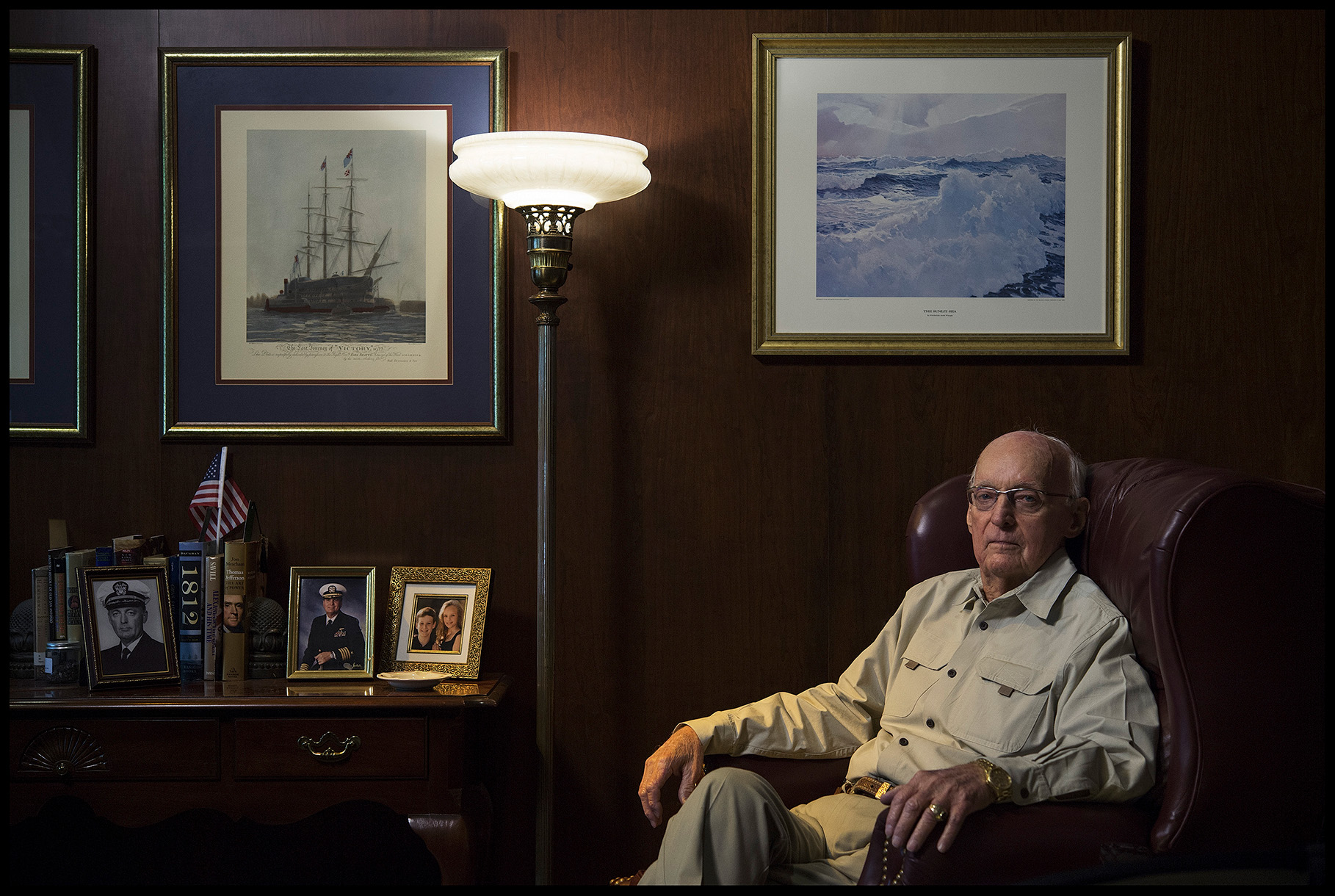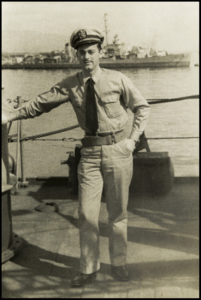
R. W. Pratt
LST Commander
R. W. Pratt
Commander, U S Navy, Ret.
1942–1946 & 1952–1982

Lt. R. W. Pratt
South Pacific, 1944
On visiting Hiroshima after the surrender: There was not a bird flying. It was still, not a breath of air; there was no sign of life of any kind. You didn’t see a bug; you didn’t see an ant; you didn’t see anything. I didn’t like it.
I grew up in San Antonio, and graduated from Jefferson High School in 1940. I went to San Antonio Junior College on South Alamo in the old Union Cavalry stable. When I’d done everything I could do there, my dad sprung for a year at St. Mary’s. Between the two, I had over 60 hours of college before the war started.
On December 7, 1941, I was an artist’s model in a little art studio. I would also frame pictures for the artists. When the war came, I signed up to go to Annapolis for a program to commission reserve officers. In early 1943 they sent me to prep school for Annapolis at Georgetown, Texas. Annapolis was full, so they sent me to Northwestern in Chicago for 120 days.
From Northwestern I went to Pittsburgh to pick up our ship, the LST 781. We sailed down the Ohio and the Mississippi to New Orleans, and through the Panama Canal to Pearl Harbor. We had a German sub follow us in the Gulf of Mexico, but they didn’t want to waste ammunition on us. It was 1944. We got to Enewetak and it was completely demolished. They were finishing up Guam and Saipan when we got there. We were securing the place. LSTs were designed to beach themselves in order to land battle-ready troops, vehicles, cargo and supplies to enemy beaches. We began supplying anything needed—troops, replacements, food, fuel, and we took on wounded. We would pick stuff up in Guam and disburse it. Mainly we carried supplies for the Marine Air Wing.
We assisted in the invasion of Okinawa from April 1 to June 22, 1945. On April 7th, I woke up and the sky was full of Japanese airplanes. They were one-way planes without landing gear—kamikazes. We lost more ships and more men that next week than any battles the Navy fought. We continued to deliver supplies to Okinawa for three or four more trips. During one of those trips they dropped the bomb. Nobody knew what that was, or what it meant.
With the fighting over, we joined a mine-sweeping operation. We anchored in the southern part of Japan in a nice spot of deep water so other ships could come and be supplied. I was the gunnery officer and the senior watch officer, and one day I didn’t have anything to do. I looked at the map and asked the skipper if I could take the jeep and go see Hiroshima; it was maybe 20 miles. I believe we were the first Americans to see the damage. In Hiroshima, there was nothing. There was not a bird flying. It was still, not a breath of air; there was no sign of life of any kind. You didn’t see a bug; you didn’t see an ant; you didn’t see anything. I didn’t like it. We stayed probably 1½ or 2 hours. The guys would’ve stayed longer if they could, digging around in that radioactive stuff. Nobody told us. We started running liberty out there, so the whole damn ship was contaminated. I had seen it and wasn’t interested in going back. Most of my guys eventually died from cancer.
Just like that, the surrender was signed and the war was over. We were happy, but got to thinking, “What are we gonna do? This is all we know. We’ve been doing this all our life.”
I got out in 1946, went to UT Austin for a year and gave up on my plans for law school, which I really regret. I couldn’t afford Austin so I went back to St. Mary’s in San Antonio. I graduated in 1948. That was a good education.
I got married in January of 1950 and was recalled that same year for the Korean War. I was ordered to Bremerton, Washington to recommission LST 735 as its executive officer. After Korea, I started many different businesses and made a good living. I’ve been married to Frances for 66 wonderful years. I introduce her as “my first wife”. {04-10-2015 • Fair Oaks Ranch, TX}